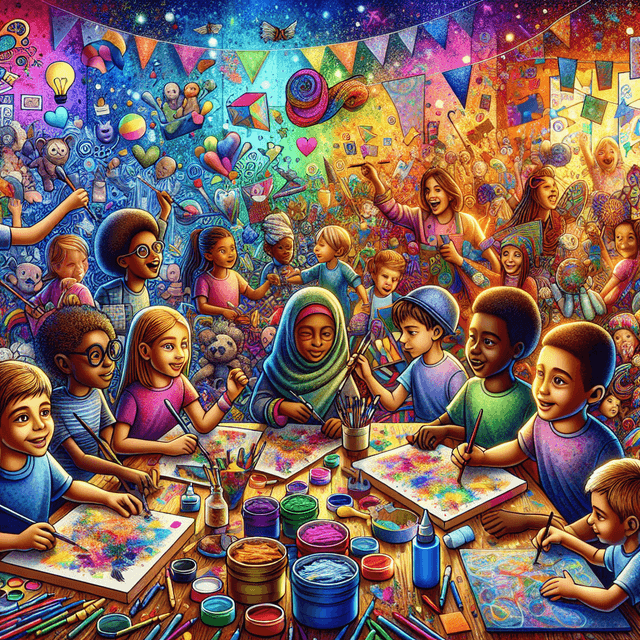Balancing Art and Academics: Strategies for Students
TL;DRBalancing art and academics requires effective time management, integrating art with academic studies, maintaining a passion for creativity, excelling in schoolwork, and utilizing technology. By prioritizing tasks, scheduling wisely, avoiding procrastination, engaging in interdisciplinary learning, setting artistic goals, employing study techniques, seeking support, and using educational and digital art tools, students can successfully navigate the demands of both worlds.

Table of Contents
Understanding the Challenges
Before diving into strategies, it's important to acknowledge the unique challenges students face when balancing art and academics. Artistic endeavors often require large blocks of uninterrupted time for creativity to flow, which can conflict with the structured schedules of academic life. Additionally, the subjective nature of art can contrast with the objective evaluation methods used in academics, leading to a dichotomy that students must navigate.
Time Management Strategies
Prioritization
The first step in effective time management is prioritizing tasks. Students should distinguish between urgent and important tasks, dedicating time to activities that contribute to long-term goals. By understanding what needs immediate attention and what can wait, students can allocate their time more effectively.
Scheduling
Creating a schedule that accommodates both art and academic work is crucial. Students should plan their weeks in advance, carving out specific times for studio work, study sessions, and classes. Consistency in scheduling helps establish a routine that can enhance productivity.
Avoiding Procrastination
Procrastination can be a significant barrier to balancing art and academics. Students should develop strategies to overcome this, such as breaking tasks into smaller, manageable parts and setting deadlines for themselves. Rewarding progress can also provide motivation to stay on track.
Incorporating Art into Academics
Interdisciplinary Learning
One way to balance art and academics is to find intersections between the two. Interdisciplinary learning allows students to apply artistic concepts to academic subjects and vice versa. This approach not only enriches the educational experience but also fosters a deeper understanding of both areas.
Creative Assignments
Students should seek opportunities to incorporate their artistic skills into academic assignments. Whether it's creating a visual project for a history class or writing a creative essay for literature, integrating art can make academic work more engaging and personally meaningful.
Maintaining Artistic Passion
Setting Artistic Goals
To keep the flame of artistic passion burning, students should set clear, achievable goals for their creative work. These goals can range from completing a certain number of pieces to participating in exhibitions or performances. Having concrete objectives helps maintain focus and motivation.
Finding a Creative Community
Joining a community of like-minded individuals can provide support and inspiration for artistic endeavors. Whether it's a school club, local workshop, or online forum, connecting with others who share a passion for art can be incredibly beneficial.
Academic Excellence
Study Techniques
Academic success requires effective study techniques. Students should explore different methods, such as active recall, spaced repetition, and the Pomodoro Technique, to find what works best for them. Tailoring study habits to individual learning styles can improve retention and understanding of academic material.
Seeking Support
When balancing art and academics becomes overwhelming, it's important to seek support. This can come from teachers, mentors, peers, or academic counselors. Don't hesitate to ask for help or guidance when needed.
Leveraging Technology
Educational Apps
Technology offers a wealth of resources to help balance art and academics. Educational apps can assist with organization, time management, and study aids. Utilizing these tools can streamline the balancing act and enhance learning outcomes.
Digital Art Tools
For the artistic side, digital art tools can offer new ways to create and explore. Programs like Adobe Creative Suite, Procreate, and others provide platforms for students to practice their craft and develop new skills that can be integrated into their academic work.
Conclusion
Balancing art and academics is a multifaceted challenge that requires dedication, organization, and creativity. By employing effective time management strategies, integrating art into academics, maintaining artistic passion, striving for academic excellence, and leveraging technology, students can find harmony between their creative and scholarly pursuits. The journey to balance these aspects of life is ongoing, but with the right approach, students can excel in both and enjoy the rich rewards of a well-rounded education.



